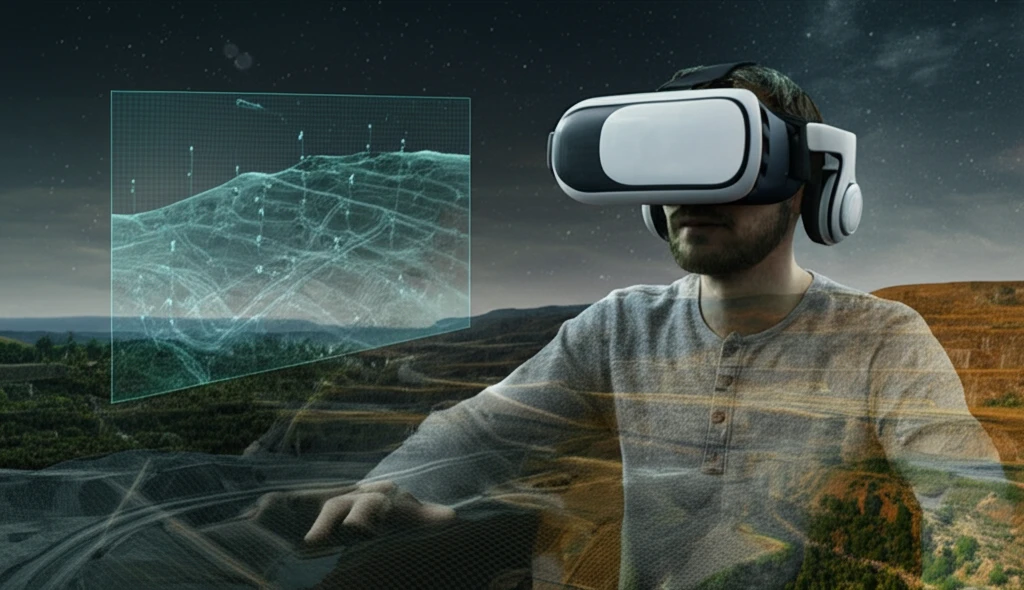
From Pit to Paradise: How VR Could Reimagine Mining Reclamation
"Explore the use of virtual reality in transforming post-mining landscapes into sustainable environments and assess the transformative potential of VR in ecological restoration."
For years, mining operations have left indelible scars on the earth, often resulting in environmental degradation and disruption of local ecosystems. As society becomes more aware of these environmental impacts, innovative solutions are needed to reclaim and restore these damaged landscapes. Enter Virtual Reality Geographic Information Systems (VRGIS), a cutting-edge technology that combines virtual reality with geographic information systems to simulate, visualize, and plan ecological restoration projects.
VRGIS isn't just about pretty visuals; it's a powerful tool that allows stakeholders to virtually explore and interact with proposed reclamation plans. This technology helps visualize landscapes in both real and imaginary environments, incorporating animation and audio to provide a comprehensive understanding of the project's potential impact. The ability to acquire, display, and process 3D data makes VRGIS invaluable for addressing environmental challenges in a visually engaging and technically sound manner.
The integration of VRGIS in mining reclamation addresses numerous challenges, including integrating diverse temporal and spatial resolutions and accurately modeling complex digital landscapes. It allows for the simulation of landscape dynamics and human perception, which is vital for effective reclamation planning. By adopting VRGIS, environmental managers can develop strategies that not only restore ecological balance but also consider the aesthetic and functional integration of reclaimed areas into the surrounding environment.
VRGIS: A Systemic Approach to Reclamation

The development of a VRGIS for opencast mine reclamation is a complex, systemic project involving multiple stages, from data collection to model design and implementation. The initial phase focuses on gathering data from various sources, including field surveys, maps, and remote sensing images. This data is then used to construct a comprehensive GIS geodatabase, which serves as the foundation for creating detailed virtual models of the mining environment.
- Spatial Analysis: Tools for analyzing spatial data to understand environmental impacts.
- 3D Visualization: Creating realistic and interactive 3D models of landscapes.
- Data Integration: Combining data from various sources into a unified system.
- Simulation Capabilities: Simulating the effects of different reclamation strategies.
Looking Ahead: The Future of Mining Reclamation
VRGIS represents a significant advancement in the field of mining reclamation, offering unprecedented capabilities for planning, visualizing, and implementing restoration projects. As technology continues to evolve, VRGIS will likely become an indispensable tool for environmental managers seeking to transform degraded landscapes into thriving ecosystems. By embracing VRGIS, the mining industry can move towards a more sustainable and environmentally responsible future, ensuring that post-mining environments are not only restored but also contribute positively to ecological diversity and community well-being.
